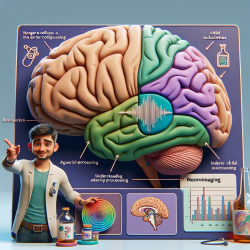Introduction
As speech-language pathologists, we are constantly striving to improve the communication skills of our clients. One crucial aspect of this endeavor is ensuring that the educational materials we provide are easily understandable. Recent research, such as the study titled "Improving the Readability of Patient Education Materials in Physical Therapy," highlights the importance of readability in patient education materials (PEM) and offers insights that can be applied across various healthcare disciplines, including speech-language pathology.
Understanding the Research
The study in question evaluated the readability of physical therapy PEM and explored methods to enhance their comprehensibility. The researchers used the Simple Measure of "Gobbledygook" (SMOG) to assess the reading levels of these materials. They found that most PEM were written above the recommended eighth-grade reading level, which can hinder patient understanding and adherence to therapy recommendations.
Through modifications such as word exclusion and revision, the researchers were able to significantly reduce the reading level of these materials. However, only the combined approach of exclusion and revision brought the reading level down to the eighth-grade level, indicating the complexity of achieving optimal readability.
Implications for Speech-Language Pathologists
While this study focused on physical therapy, its findings are highly relevant to speech-language pathologists. Our goal is to ensure that children and their families can easily understand the materials we provide, thereby enhancing therapy outcomes. Here are some actionable steps based on the research findings:
- Assess Readability: Utilize tools like the SMOG or Flesch-Kincaid Grade Level to evaluate the readability of your educational materials. Aim for a reading level that aligns with the comprehension abilities of your audience.
- Modify Language: Consider revising complex words and phrases. Replace jargon with simpler terms and use shorter sentences to convey information more clearly.
- Combine Methods: Employ a combination of word exclusion and revision to achieve the most significant improvement in readability.
- Incorporate Visuals: Use images, diagrams, and videos to supplement written materials. Visual aids can enhance understanding, especially for children and individuals with limited literacy skills.
- Engage Families: Encourage family involvement in the therapy process. Providing materials that family members can easily understand will empower them to support their child's progress effectively.
Encouraging Further Research
While the study provides valuable insights, it also highlights the need for ongoing research in this area. Speech-language pathologists can contribute by exploring the readability of materials specific to our field and investigating innovative methods to improve comprehension. Collaborating with researchers and participating in studies can help advance our understanding of effective communication strategies.
Conclusion
Improving the readability of patient education materials is a crucial step toward enhancing therapy outcomes for children. By applying the findings from the research on physical therapy PEM, speech-language pathologists can create materials that are accessible and engaging for their clients. This, in turn, will foster better understanding, adherence, and ultimately, successful therapy outcomes.
To read the original research paper, please follow this link: Improving the Readability of Patient Education Materials in Physical Therapy.










